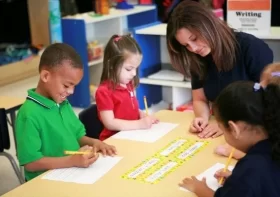How to make sure pocket money teaches your kids financial skills

Giving pocket money to children is a valuable opportunity for parents to instill essential financial skills from an early age. The amount you provide is crucial, striking a balance between meeting basic needs and fostering responsibility. This article explores the significance of pocket money and offers practical tips to ensure it becomes a powerful tool for teaching financial literacy.
The Purpose of Pocket Money (Approx. 150 words): Pocket money serves as an introduction to financial responsibility, helping children understand the value of money and the importance of budgeting. It enables them to make choices, prioritize their spending, and learn the consequences of financial decisions in a controlled environment. Setting a clear purpose for pocket money establishes a foundation for teaching broader financial skills, such as saving, budgeting, and understanding needs versus wants.
Determining the Amount (Approx. 200 words): When deciding the amount of pocket money to give, consider the child’s age, individual needs, and the family’s financial situation. It’s essential to strike a balance between providing enough for basic necessities and leaving room for discretionary spending. Tailor the amount based on what the child is expected to cover independently, such as snacks, toys, or non-essential items. Adjustments can be made over time to align with the child’s growing needs and understanding of money.
Setting Expectations (Approx. 150 words): Clearly communicate the expectations associated with pocket money. Explain what expenses it should cover and any responsibilities tied to its receipt. Encourage open discussions about financial goals, savings, and the importance of making informed choices. Establishing expectations helps children develop a sense of accountability and a deeper understanding of the connection between effort, responsibility, and financial rewards.
Teaching Saving Habits (Approx. 200 words): Encourage saving by introducing the concept of setting aside a portion of pocket money for future goals. Help children identify short-term and long-term objectives, whether it’s buying a toy, saving for a special occasion, or planning for the future. Provide a simple piggy bank or savings account to illustrate the physical or digital representation of saving money. This instills discipline and the value of delayed gratification.
Learning from Mistakes (Approx. 100 words): Allow children to make financial mistakes within the confines of pocket money. Facing the consequences of a poor spending decision is a powerful learning experience. Use these moments as opportunities for constructive conversations about decision-making, planning, and the importance of learning from errors.
Conclusion (Approx. 100 words): In conclusion, pocket money is not just about providing funds; it’s a tool for cultivating financial literacy. By setting clear expectations, teaching saving habits, and allowing room for mistakes, parents can transform pocket money into a powerful educational tool. Empowering children with financial skills from an early age lays the groundwork for a lifetime of responsible money management.




Leave a Reply